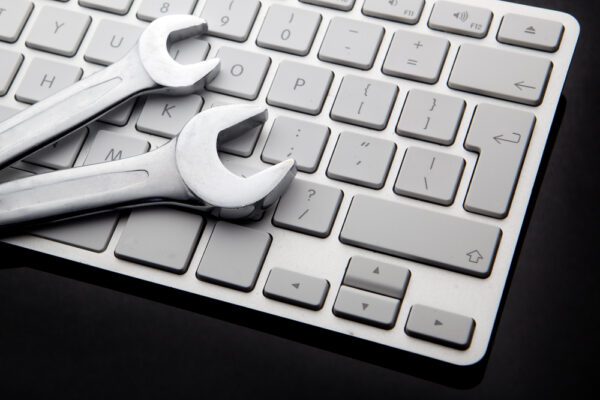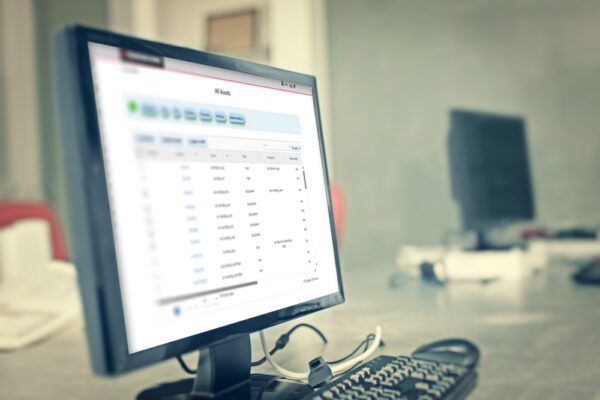
Accurate maintenance data is critical for the success of any computerized maintenance management system (CMMS). Industrial organizations invest in CMMS software to increase efficiency, improve asset reliability, and reduce maintenance costs. However, the urgency of implementation often leads teams to overlook critical tasks, such as reviewing their current maintenance data before entering it into the system.
As a result, bad maintenance data is entered into the system from the start, disrupting maintenance operations and setting your team up for failure. In this article, we’ll examine how CMMS data quality directly impacts maintenance operations and explain why reliable maintenance data is essential for effective maintenance management.
What is CMMS Data Quality?

CMMS data quality is the extent to which information in a CMMS accurately reflects the real-world entities it represents. It is a measurement of how well maintenance records correctly document and reflect the true state of assets, inventory levels, and resource availability.
High-quality CMMS data is critical for making informed decisions related to asset lifecycle management, maintenance scheduling, resource allocation, and other maintenance management processes. Poor-quality data makes decisions more difficult and leads to real-world consequences. For example, a Gartner report estimates that organizations lose an average of $12.9 million (USD) each year due to poor quality data.
What is Meant by “High-Quality” CMMS Data?
Recognizing poor-quality CMMS data is easier said than done. Within a dataset containing hundreds to hundreds of thousands of records, it can be difficult to distinguish the “bad” data from the “good” data. So, how can you evaluate the quality of your data?
CMMS data quality is measured by comparing the condition of your maintenance data to an ideal state. High-quality data is commonly defined by the following characteristics:
- Accuracy: The data correctly represents what it is intended to represent.
- Completeness: All necessary data is available.
- Consistency: The data exactly matches across all places where the data is stored and used.
- Currency: The data was recently collected and/or reflects the most up-to-date information.
- Relevancy: The data serves a meaningful purpose.
- Timeliness: The data is available within the expected timeframe.
- Uniqueness: The data is uniquely identified and not duplicated.
- Validity: The data is properly structured according to defined rules and parameters.
High-quality CMMS data provides a strong foundation for informed decision-making, ensuring you can rely on facts rather than gut feel, make better recommendations, and strengthen your credibility within the organization.
The Operational Impact of Bad Maintenance Data

On the surface, a little compromised data in your CMMS may seem like a minor issue. After all, could it really be that bad? To put it simply, yes. Even small errors and inconsistencies can have big implications and lead to costly consequences. Let’s look at a few examples of bad maintenance data and the ripple effect it has on operations.
Duplicate or Missing Asset Records
Suppose an asset is entered into the CMMS multiple times under different record IDs. When users encounter the duplicated records, they choose one using their best judgment or out of convenience.
As a result, work order history and downtime is tracked across multiple records, both of which provide an incomplete picture of asset performance and maintenance needs. From a planning perspective, duplicate records may result in redundant preventive maintenance being scheduled for the same asset, wasting valuable time and resources. KPI reports may also show misleading information about your assets.
When an asset or piece of equipment is not entered into the CMMS at all, maintenance activities may go untracked. For example, critical equipment that isn’t recorded won’t have scheduled preventive maintenance, and any repairs may not be logged. This leads to gaps in maintenance history, unexpected downtime, and flawed reports, making it difficult to allocate resources or avoid unexpected downtime.
Inaccurate Inventory Records
Every maintenance department has dealt with the consequences of inaccurate inventory data. Outdated or inaccurate stock levels can lead to too much or too little inventory on hand, both of which present challenges for maintenance teams.
When a CMMS incorrectly shows low stock for a part, it triggers purchasing activity – even though the part is actually available. This reordering results in overstock, which ties up money and takes up physical space in the stockroom. Worse yet, excess parts may become obsolete before they are used.
On the other hand, stockouts can occur when the CMMS indicates that a part is available when it is in fact, not. This mismatch leads technicians to assume parts are available, only to discover they are not in stock when needed.
As a result, the organization incurs unnecessary costs due to excess downtime and emergency orders with premium shipping fees. Stockouts are especially problematic for highly specialized parts, which may have long lead times for replenishment.
Learn more about MRO inventory KPIs to improve spare part management
Work Order and Maintenance History Errors
Errors such as incorrect task details, missing completion dates, or improperly logged labor hours can disrupt operations. For example, if a routine inspection is marked complete without documenting the actual work performed, technicians may repeat the same task unnecessarily.
Conversely, if a required task is skipped or recorded incorrectly, equipment may fail prematurely. This can lead to unexpected downtime, higher repair costs, and potential safety risks. These mistakes and omissions make it harder for teams to assess performance, plan maintenance schedules, and identify recurring issues.
Incomplete or Inaccurate Compliance Documentation
Organizations in regulated industries face rigorous maintenance audits to ensure compliance with safety protocols and regulatory standards. When a CMMS contains bad maintenance data, the consequences can be severe.
For example, if work order history for critical equipment is incomplete or missing, auditors cannot verify that necessary inspections or repairs took place. This lack of verification can lead to costly fines, product recalls, or even shutdowns by regulatory bodies.
Additionally, poor-quality data makes it challenging to address violations promptly, as valuable maintenance resources must be dedicated to tracking down the correct information. This delay can expose organizations to additional penalties and heightened scrutiny in the future. Continued non-compliance can increase liability, damage the organization’s credibility, and undermine its ability to do business.
Learn how to pass maintenance audits
As you can see, the effects of poor-quality data are far-reaching, disrupt maintenance operations, and negatively impact maintenance efficiency.
Unreliable KPIs
Key performance indicators (KPIs) and maintenance reports rely on accurate CMMS data. When data is incomplete, duplicated, or incorrect, these sources of information become unreliable and mislead management decisions.
For example, missing work orders for asset failures can artificially raise Mean Time Between Failures (MTBF) calculations, making assets appear more reliable than they actually are. Duplicate records can fragment results and lead to confusing performance trends.
Similarly, work orders with incorrect start or completion times, undocumented tasks, or incomplete labor information can make Mean Time To Repair (MTTR) appear shorter than reality, while duplicated records could make it appear longer. In either case, these flawed metrics can lead to poorly informed decisions about maintenance scheduling, resource allocation, and budgeting.
Learn more about top asset management KPIs like MTBF and MTTR
When KPIs don’t match your real-world experience, it can be hard to trust your CMMS. Maintenance managers may be tempted to make decisions based on intuition rather than facts, and other business leaders may lose confidence in the maintenance team’s ability to drive reliability improvements.
Common Causes of Bad Maintenance Data

Bad maintenance data comes from various sources, but a handful of factors are responsible for most CMMS data quality issues. Understanding these sources is essential for preventing poor-quality data in the first place. The following are some of the most common causes that affect CMMS data quality.
Rushed Implementation
When maintenance teams are pressured to get their CMMS up and running quickly, critical steps like reviewing, cleaning, and validating data are often skipped. As a result, maintenance data is dumped into the new system “as is,” including any duplicated, outdated, or incomplete information. Once in place, it can be difficult to identify bad data and time-consuming to correct.
Human Error
People make mistakes. When data is entered by hand, there is a risk of typos, skipped fields, and other data entry errors. One study found that as much as 4% of manually entered data contains errors. Other studies have found that up to 5% of data contains errors, depending on its complexity.
While this number may seem small, consider that CMMS systems contain hundreds or thousands of records, meaning that dozens of critical maintenance records may contain inaccuracies. Not only can this poor quality data lead to misinformed decisions, it also raises doubts about the reliability of other data in the system.
Lack of Standardization
Standardization refers to entering data consistently based on pre-defined rules and formats. Without standardization, CMMS data may be entered in various formats, spelling, or abbreviations, which leads to further errors and confusion.
For example, one user may enter an asset number as “Pump 1,” while another user enters “Pump 001” or “P-1”. These inconsistencies make it harder to track the asset because multiple naming conventions prevent accurate search results and may cause the asset to be left out of valuable maintenance reports.
Poor Data Entry Habits
Bad maintenance data often results from poor data entry habits, especially when employees with little computing experience are expected to use a CMMS. For example, users may create new records rather than check for existing ones, skip fields when data entry seems cumbersome, or rely on memory rather than verifying information. Over time, these practices make the CMMS database cluttered, inconsistent, and harder to trust.
CMMS Software-related Issues
Sometimes, a CMMS solution’s design or lacking configuration options can lead to bad maintenance data. When essential fields are missing, users will enter information into any other available fields, even if they weren’t intended for that purpose. Systems that lack sufficient field validation allow users to enter data in non-standard formats, creating inconsistencies.
Additionally, CMMS with limited configuration options, such as mandatory fields and dropdown field customization, leave data susceptible to errors. The reliance on manual data entry without automation also significantly increases the risk of human error.
How to Fix – or Prevent – CMMS Data Quality Issues

CMMS data quality can cause widespread problems, but there are effective ways to mitigate them. Ideally, bad data is caught before being entered into the CMMS. However, you can still address data quality issues after it is in the system. Consider the following strategies.
Clean Your Data
Garbage in, garbage out. Entering bad maintenance data into your CMMS will lead to poor-quality results. Therefore, organizations should clean their data before entering it into the system.
Data cleaning is the process of identifying and fixing errors within a dataset so that it is accurate and usable. This step is particularly important for organizations transferring data from a legacy CMMS, spreadsheet, or other in-house solution into a modern CMMS. Too often, organizations focus solely on migrating data into the new system without analyzing their existing data. As a result, maintenance teams struggle to derive value from the new system because they continue to work with flawed data.
For best practices on preparing maintenance data for import, check out our article Best Practices for Preparing Maintenance Data for CMMS Import.
Establish Data Entry Standards
Creating and enforcing data entry standards is vital for ensuring consistent data across the CMMS. This includes designing an asset naming convention, setting required fields, and defining appropriate data formats, such as dates or numerical values. To help users adhere to these standards, the CMMS can be configured with required fields and field validation rules. Additionally, offering users pre-selected values instead of allowing free-form entry can further minimize errors.
Regularly Audit Maintenance Data
Resolving data quality issues is an ongoing process. Humans are prone to making mistakes from time to time, and the software can’t realistically prevent every error. Therefore, it is important that administrators regularly audit CMMS data to ensure that standards are being followed.
Schedule periodic reviews to ensure that all assets are tracked in the system, all required data is being entered, and that users are following a consistent format. Depending on the size of your dataset, consider spot checks that randomly assess a subset of records for accuracy.
Provide Regular Training
Proper training ensures that technicians can effectively utilize the CMMS and maintain high data quality. Since technicians are primarily responsible for data entry, it is critical that they are well-equipped with the knowledge and skills needed to enter good data.
Training sessions should emphasize the value of accurate data by helping technicians understand how their data entry responsibilities impact maintenance operations. In addition, they should receive thorough instructions on how to navigate the CMMS and input data correctly. Vendor-provided training, user manuals, and step-by-step guides for common tasks are valuable resources for reinforcing best practices and minimizing errors.
Learn more about FTMaintenance Select training
Maximize the Value of Your Maintenance Data with FTMaintenance Select
High-quality CMMS data is the backbone of effective maintenance management. Accurate, consistent information empowers you to make strategic maintenance management decisions that minimize downtime, improve performance, and control costs. Though maintaining data quality is challenging, the costly and widespread consequences of poor data are worth avoiding. Implementing a CMMS such as FTMaintenance Select presents the perfect opportunity to establish strong data quality management practices.
FTMaintenance Select provides a centralized platform that helps you organize your maintenance data, making it easier to track, manage, and maintain data quality. By bringing together all of your critical asset, work order, inventory, and resource information in one place, you can ensure consistency across your data and reduce errors. With accurate, reliable data at your fingertips, you can make informed decisions that optimize maintenance operations. Request a demo today to learn how FTMaintenance Select can provide the insights you need for successful maintenance management.